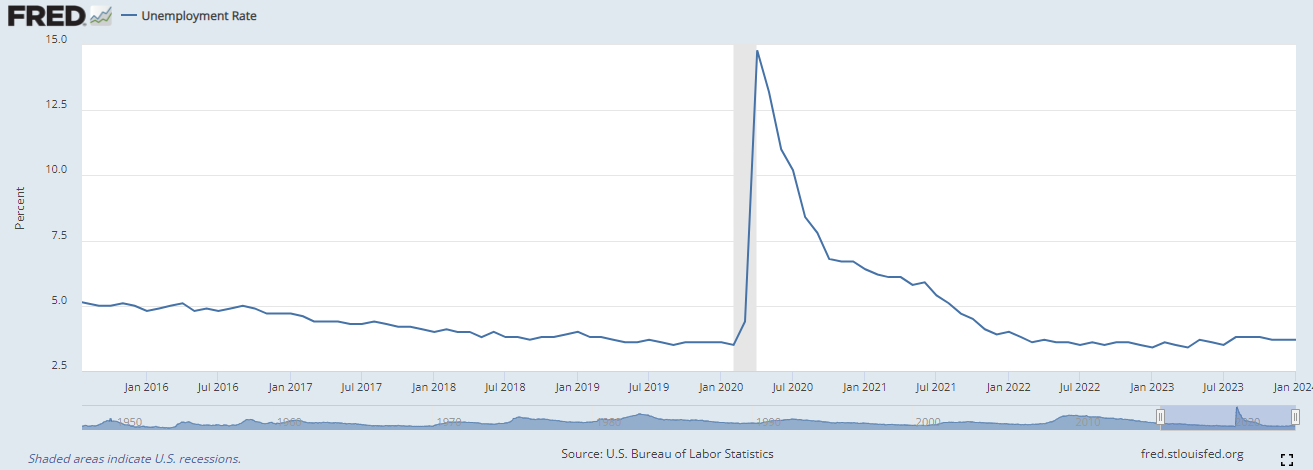Unemployment Rate Holds Steady at 3.7% in January
The latest data release from the Bureau of Labor Statistics (BLS) reveals that the U.S. unemployment rate remained unchanged at 3.7% for the third consecutive month in January. This stability in the jobless rate coincided with little change in the number of unemployed individuals, which stood at 6.1 million during the period under review.
Breaking down the unemployment rates across various demographic groups, the figures remained relatively steady. Adult men recorded a 3.6% unemployment rate, while adult women reported 3.2%. Teenagers faced a higher unemployment rate at 10.6%. Among racial demographics, Whites had a 3.4% unemployment rate, Blacks 5.3%, Asians 2.9%, and Hispanics 5.0%.
The number of long-term unemployed individuals, defined as those jobless for 27 weeks or more, remained stable at 1.3 million, accounting for 20.8% of the total unemployed population.
Key labor force metrics such as the labor force participation rate (62.5%) and the employment-population ratio (60.2%) showed little to no change in January compared to the previous month and year.
In terms of part-time employment, approximately 4.4 million individuals worked part-time for economic reasons, such as reduced hours or inability to find full-time positions, with minimal change reported in January.
The number of individuals not in the labor force but desiring employment remained relatively stable at 5.8 million. Among this group, 1.7 million were marginally attached to the labor force, indicating a desire for work but not actively seeking employment. Within this subset, discouraged workers, who believe no jobs are available for them, increased to 452,000 in January.
On the establishment side, total nonfarm payroll employment witnessed an uptick of 353,000 jobs in January, similar to the previous month's gain of 333,000. Job growth was particularly notable in professional and business services, health care, retail trade, and social assistance sectors.
Professional and business services saw a robust increase of 74,000 jobs, primarily driven by gains in professional, scientific, and technical services. Health care added 70,000 jobs, while retail trade and social assistance industries recorded increases of 45,000 and 30,000 jobs, respectively.
However, some sectors experienced declines in employment, notably the mining, quarrying, and oil and gas extraction industry, which reported a decrease of 5,000 jobs in January.
Average hourly earnings for all employees on private nonfarm payrolls rose by 19 cents to $34.55, reflecting a 0.6% increase in January. Over the past 12 months, average hourly earnings have seen a 4.5% increase. The average workweek for all employees on private nonfarm payrolls decreased by 0.2 hour to 34.1 hours in January, with manufacturing remaining unchanged at 39.8 hours.




